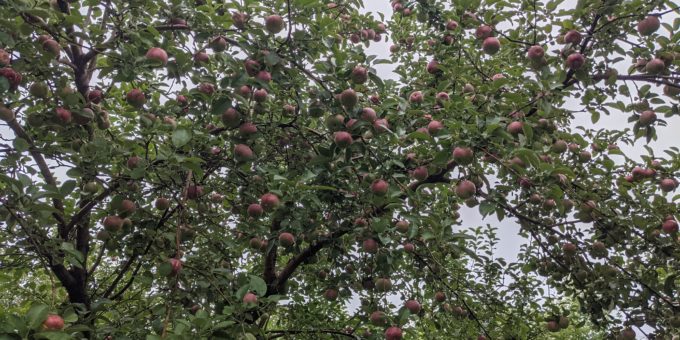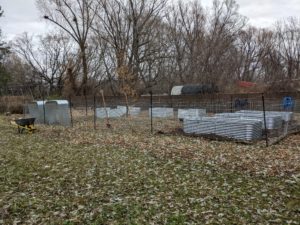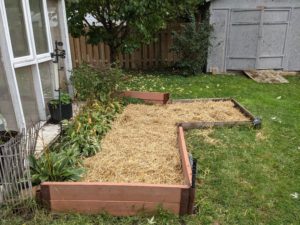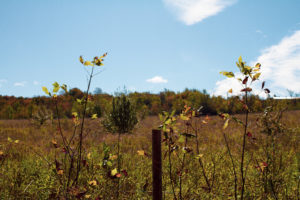
This is the first post in a series which aims to cover all the things we wish we knew about the actual process of buying a home. We are compulsive googlers and could not find any resources online that answered our questions about the nitty-gritty details. Our goal is to share what we leaned in the hopes that some other frazzled person will find these posts and end up with a few less grey hairs. It is important to note that this is a reflection of our own experience and is certainly not advice.
So you want to move out of a rented apartment in a city to a rural wonderland? It is certainly fun to fantasize, but when it comes to actually not letting your dreams be dreams, a solid – yet flexible – plan is the place to start. Looking back I think we probably left a lot more to whim than most people would have. I believe the reason for that was the extreme burnout I was facing in late 2020 and the wild housing market in early 2021. Both situations felt like they were pushing us to make massive, life changing choices right now. Fortunately, we had started high level planning well ahead of both of those situations and could lean on that to get us through.
Some of the first decisions we had to make was determining if we wanted to build or buy, where we would like to live, what kind of property and home we would like to have, and what we could afford.
Build our own, or buy existing?
We started planning a move to a rural area in Fall of 2019. At that time we were still thinking a tiny home or custom-built small home might be a feasible solution for us, so we were considering vacant lots as well as lots with homes.
We determined there were four scenarios we could pursue:
1. Buy a bare lot, save to build later
While it is possible to get a mortgage for bare land, they are expensive requiring as much as 50% down, and having much higher interest rates than a residential mortgage. Additionally, there is a lot of work and research that needs to be done before making the purchase. We would have had to make sure that the lot could have been used for residential purposes we wanted prior to making the leap. There would be additional risk that zoning or rules may change, and we would have to be tied to a location without actually being able to live there yet. We couldn’t buy land close enough that we could pop over and work on it while we maintained rented accommodation elsewhere, and we certainly couldn’t afford the costs of building while carrying the costs of the land mortgage and rent. This option simply wasn’t a good choice for us.
Tiny homes on wheels or other options like RVs are not legal for year round residency in Ontario, and often require special zoning. That means that purchasing a trailer and living in the structure permanently or while building wasn’t feasible.
2. Get a builders loan for a bare lot and start building
Rather than trying to pay for the building of a new home with cash, we could get a construction loan. Like with a mortgage for bare land, this is considered a riskier loan, resulting in higher rates and down payment requirements. The real nail in the coffin for this approach for us is that you would typically already need to have building plans in place to quality. Like with the bare land option, we would have to put a lot of planning work and cost upfront to engage with a builder to draw up appropriate plans and ensure the target property would allow this construction. This was not something that we wanted to, or could afford to do.
3. Get a traditional mortgage for an acreage with a home already on it
This isn’t something we realized would be an issue before we really started looking at home, well after the initial planning phases. I did want to cover this now, because it would have saved us some heartbreak if we realized at the time.
It turns out, traditional mortgages typically only cover a maximum number of acres after which you may be required to pay for the value of the land as part of your down payment. There are additional considerations around zoning that could impact the mortgage, i.e. residential versus agricultural zoning. I won’t get into all the details here but rather link to this article which I think does a good job covering most of it. We were never seriously considering agricultural zoning, but if you want to keep animals or make money off your property, that is something you may need to look in to.
For us personally, the broker we were working with let us know that the maximum acreage for the product we were pre-approved for was 5 acres. We learned this after falling in love (online!) with a 7 acre property, which left us scrambling to determine if we could make it work. In the end, an offer was accepted on it prior to us even being able to visit in person, let alone figure out the financing. After that, we only looked at properties with 5 acres or less.
If you are going into your search with a pre-approval, make sure you know what it covers and use that to guide the properties you are considering.
4. A traditional mortgage for a traditional house
The final and easiest option was to buy a property of less than 5 acres that already had a home on it. At this point in planning we were still considering a fixer-upper, or possibly a property where we could have accessory buildings that could be used for visitors or even ourselves, while keeping the existing building to comply with by-laws.

Where do we want to live?
There has been a lot said about the mass exodus from cities into rural communities as a result of the pandemic and how it changed how people lived and worked. One of us can work fully remotely and has for large portions of their career, but the other’s work is strongly tied to physical infrastructure. We don’t have enough resources to stop working all together, and we weren’t going to try to make our living from the land alone.
One option that was considered was moving to an area with such a low cost of living that we could survive on the one income from remote work. While this might be a good choice for some, T really loves her work and isn’t ready to give it up.
We instead decided to make a list of areas of the province we could likely afford the type of lifestyle we were wanting and start applying for jobs in those regions. We would then move to the new job and start house hunting once we were there in person. A major flaw in this approach is that we were doing this in 2019 and early 2020 before housing prices went crazy due to the pandemic. It worked out for us in the end, but we ended up with a lot less purchasing power than we initially planed for.

What are our wants and needs?
After we decided that we were going to look for an property that had an existing house, we began to put together a list of requirements. Our initial list was ambitious and needed to be changed along the way, but it started off something like this:
- At least one acre, more depending on if there is a septic tank and how big it is/where it is located.
- No more than an hour drive from work for T.
- Must have reliable high speed internet.
- At least two bedrooms, but three are preferred.
- Two bathrooms strongly preferred.
- Must be in livable condition.
- Must not currently be rented out – we have no interest in evicting tenants.

What does our budget look like?
Owing a home comes with many more costs than just paying the mortgage and property tax. There are quite a few different philosophies on how to determine what is affordable, but in the end this is a deeply personal choice that needs to take into consideration your risk tolerance.
We ended up picking a number for our maximum budget based on:
- How much we had saved for a down payment.
- What monthly mortgage payments would be for the balance based on current interest rates.
- What we were able to be pre-approved for.
Our budget maximum would result in a mortgage payment about 120% of what we were paying in rent. This felt safe to us because it is still about 15% of our monthly take home pay. When people talk about housing affordability they often suggest that housing costs shouldn’t exceed 30% of take-home pay to be considered affordable. With 15% going to the mortgage alone, that left the other 15% to cover expenses such as insurance, utilities, maintenance. I want to acknowledge that we are in an extremely privileged position to have incomes that will support decent housing at only 30% of take-home, and that this ratio isn’t achievable for the vast majority of people due to the way housing is commodified and labour is exploited with low wages.
Some may question why we would consider taking on a mortgage that is higher that we could get away with paying in rent. It is important to recall that we were making a huge leap in lifestyle from a small apartment to a freehold home with land. From a purely personal finance view this wasn’t a wise decision. As we mention in another post, our choices aren’t only driven by maximizing savings.
Another factor in the budging process is what’s available in the desired area for that cost. In 2019 we were seeing homes well below our max number that would meet all the items on our shopping list, however prices were rapidly increasing once we actually began looking in early 2021. In the price range we were considering, houses were easily doubling in value in that two year period.
Our next post will talk more about the actual searching and viewing process, but I want to mention that we were actually looking at homes well below that maximum number because we wanted to spend as little as we could, and we knew that houses were not selling at list prices. We ended up spending very close to our maximum budget on the home we purchased, which was 130% of asking price.
Going into the process with this very firm idea of a maximum budget resulted in us walking away from houses we were bidding on once we were no longer able to increase our bids. There was a lot of pressure to be flexible about that number, but we stuck to our limit and we’re happy we did.
With the subjects of location, property type, wish list and budget sorted out we were ready to start our actual search! The next posts in this series will cover the process of looking for listings and viewing homes, the bidding process, finalizing financing and the closing process.
We hope this has been a useful window into the process if it’s something you are considering for yourself. Please feel free to leave any questions or comments below.



